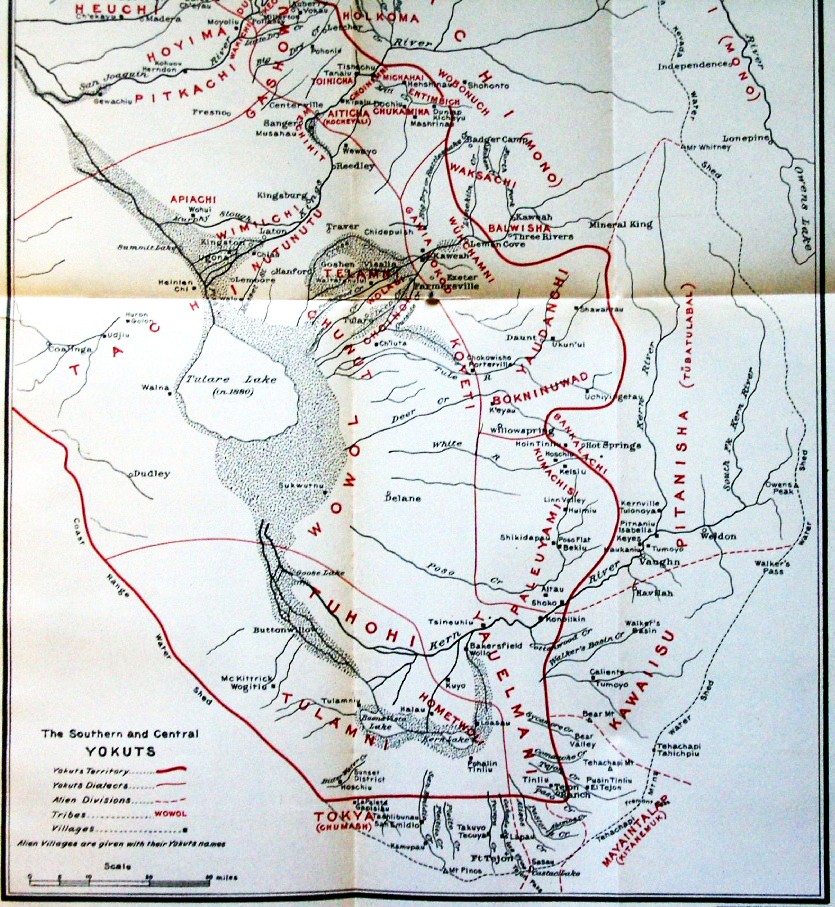![]()
Yokuts * Chumash * Kawaiisu * Tubatulabal * Monache
|
|
for more info please see
|
|
The Chumash believed that their ancestors originated in the Channel Islands and crossed over to the mainland long ago on a bridge of rainbows. Some Chumash were unable to make the journey and fell into the waters of the Santa Barbara Channel, where they were transformed into Dolphins. for more info please see
|
|
color="#970000">- The Kawaiisu were actually several bands, not an organized tribe, who lived in the Tehachapi area and spoke a common language that linguists place in the Numic branch of the Uto-Aztecan language family. The Kawaiisu and other Uto-Aztecan peoples along the crest and on the east side of the Sierra Nevadas are often called Paiutes. However, these different groups lived and traveled separate from one another, and often spoke languages unintelligible to each other. Kawaiisu is actually the name that the Yokuts of the Great Valley gave these people, as the Kawaiisu never had a name of their own. Sometimes they are referred to as the Tehachapi indians. However, Tehachapi is actually a Yokut word that Frank Latta tells us translates as "oak flat near a spring" which means it tells us where they lived, but not who they were. When asked to name themselves, a group of elderly Kawaiisu reportedly came up with "Nu-oo-ah", which translates as "people". for more
info click
|
|
for more info please see
|
|
for more info please see
|
![]()
|
Barras, Judy (1984) Their places shall know them no more (Judy and Bud Barras: Tehachapi), 91 p. Kroeber, Alfred (1925) Handbook of the Indians of California (Smithsonian Institution: Washington D.C.), 995 p. Latta, Frank F. (1977) Handbook of Yokuts Indians, 2nd Edition, Brewer's Historical Press and Coyote Press, 765 p. Schiffman, Robert A. and Alan P. Garfinkel (1981) Prehistory of Kern County, an overview, Bakersfield College Publications in Archaeology, Number 1. Spier, Robert F.G. (1978), "Northern Valley & Foothill Yokuts" in Handbook of North American Indians - California (Robert F. Heizer, ed.), Smithsonian Institution, Washington, D.C., v. 8, p. 462-470 & 471-484. Spier, Robert F.G. (1978), "Monache" in Handbook of North American Indians - California (Robert F. Heizer, ed.), Smithsonian Institution, Washington, D.C., v. 8, p. 426-436. Steward, Julian H. (1935) Indian Tribes of Sequoia National Park, U.S. Dept. of the Interior, National Park Service. |
From Kroeber (1925), Plate 47

From Kroeber (1925), Plate 47
| Copyright © 1999- - Southern Sierra High Adventure Team |